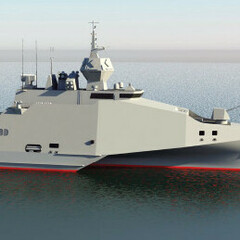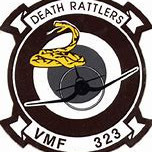-
Posts
2127 -
Joined
-
Last visited
About Bremspropeller
- Birthday 01/01/1900
Recent Profile Visitors
8118 profile views
-

DCS: Cold War Germany - update 2025
Bremspropeller replied to MAESTR0's topic in DCS: Cold War Germany
The NE ist mostly flat. South of Hannover, it gets more and mor hilly and higher. Most of that fall under the category "Mittelgebirge": https://en.wikipedia.org/wiki/Mittelgebirge https://es.wikipedia.org/wiki/Mittelgebirge If you'd want proper "Hochgebirge", you'd have to chime in with the pleas of extending the map farther south towards the Alps (which I'd strongly support): https://es.wikipedia.org/wiki/Alta_montaña -
The 3D model needs to be corrected anway, as it features the Magic 2 notches in the tailfins.
-

DCS: Cold War Germany - update 2025
Bremspropeller replied to MAESTR0's topic in DCS: Cold War Germany
Fun fact: There's actually TWO airfields in this frame. The grass airfield just to the North of Nordholz NAS (called Nordholz-Spieka) is secluded by a fence IRL. The field just to the far side of the treeline is actually part of the airfield: -

A listing of all variants of J-7 and J-8.
Bremspropeller replied to PLAAF's topic in Deka Ironwork Simulations
Not sure how large Deka is as a dev-team, but honestly, making a J-7 package would be awesome: - J-7I (F-7A) => allows for larping the MiG-21F-13 - F-7B or F-7M (whatever makes more sense) - F-7MG or G (most modern variants) - FT-7B (because trainers are cool) Now, the avionics are way different across those variants, so skipping one of those - either the B/M or MG/G - may make sense. -
Instead of a remastered bis, I'd rather like to have a variety of earlier variants. Maybe a J-7 (F-13 stand in), a FL/PFM, a M/MF and/or maybe a trainer, as the M/MF is already close'ish to the bis.
-

Generic African map. (yes I know Africa is a continent)
Bremspropeller replied to Baco's topic in DLC Map Wish List
Finally some decent use for that side-door minigun on the Gazelle There are several "hot spot" places worth modelling: - Border War - Bush War (Rhodesia => Zimbabwe) with involvement of it's neighbours - portugese colonies in their independance-struggles (Mocambique is interlinked with the Bush War) - the Congo has basicly constantly been at war for 65 years - other inner-african wars (Uganda-Tanzania, Ethiopia vs Somalia and Eritrea, etc.) - Francafrique (for example: Op. Manta and Epervier in the Chad have lasted for over three decades) -
Pull the western map boundary farther west, include Sardinia (Deci!) and Corsica (Solenzara!) and model more italian mainland-airfields. The Typhoon, Tornado, Spillone, Macchi and Gina need a home.
-
Wow, starting as a Sabre squadron must be tough - I mean it's a great jet, but it's fairly specifc. Plus, it's a phat F-86F, not a sleek Sabre 6. Here's to having more Sabres! @birkenmopedwas that HLUP B component a part of LUTRANS, or were those flights a different matter altogether? Here's to having a Transall!
-
I can't believe you're not mentioning Alhorn as a JG 71 base. JG 71 was established at Alhorn and got their "Richthofen" name there. When they were flying proper fighters. Sabres. With proper leaders. Erich Hartmann.
-

DCS: Cold War Germany - update 2025
Bremspropeller replied to MAESTR0's topic in DCS: Cold War Germany
The large (nowadays) taxiway inthe west at Düsseldorf Intl used to be a runway during the map timeframe: The large building at the southern end of the crossing rwy as shown on the dev screenshot wasn't there before the devastating fire in 1996. -

DCS: Cold War Germany - update 2025
Bremspropeller replied to MAESTR0's topic in DCS: Cold War Germany
I see what you did there. I'm somewhat a man of culture myself... Is there a way of dialling back the amount of Pam An 747s and BA 727s? It seems like the entire Pam An 747 fleet is in Europe (well, they were part of the Civil Reserve Air Fleet, so...). BA never had 727s - the only 727s in BA-colours were operated by Comair in South Africa. Also, the "Negus" livery (1974-1985'ish) would make more sense for the time-frame (HS Trident): ================================ Uh-oh, uh-oh! -
And make the F-5 have access to mobile air or whatever it takes to start off-airport.






.thumb.png.5df1987b2996b13507b528d68e459883.png)



